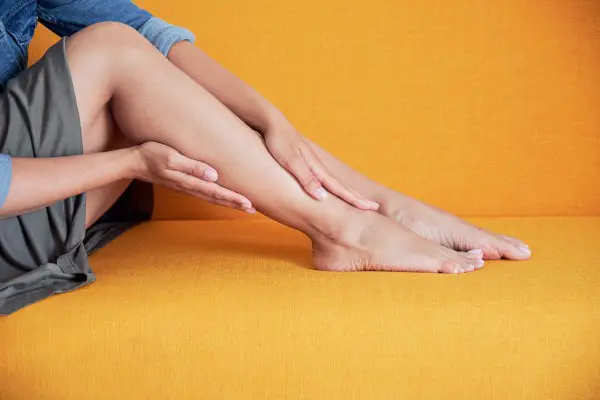You may have recently taken a Vein Quiz, assessing your health and found the right Doctor to help treat your varicose veins! Your Vein Specialist advised a form of thermal ablation, fitting you for compression stockings, and scheduling an additional appointment with you for either, Endovenous Laser Treatment (EVLT) or Radiofrequency Ablation (RFA). You go home with a lot of instructions, like begin wearing stockings now, and bring them with you for use as bandages after your future procedures.
Doctor appointments are overwhelming, and it takes time to think of questions you may have regarding therapies. Often, patients inquire about treatment plans after the initial consultation. It takes time to process unfamiliar information, especially in regards to one’s health.
Gradient Compression Stockings
When you understand how something works, more often than not, you are more willing to give it a try. There are several forms of support stockings sold in stores, but not all of them are gradient socks! Picking stockings is a crucial distinction to make because the most commonly marketed and sold stockings are non-medical support hose. The compression is not uniform, nor does the pressure gradually ascend as desired. For people with varicose veins or more advanced symptoms of Chronic Venous Insufficiency, the issue is that these types of non-gradient stockings could worsen symptoms.
Compression Stocking Physics 101
How do gradient compression stockings work? Keeping it simple savvy, they mimic the venous circulatory system. By applying graded compression at the ankle, pressure travels up the garment, pushing blood flow upwards towards the heart, preventing swelling in the lower extremities. It’s like rolling up a tube of almost empty toothpaste: you are exerting pressure at the base of the sock to move the goo in only one direction. Similarly, gradient compression stockings ensure blood flow is uni-directional towards the heart, rather than refluxing downwards towards the legs or feet.
When blood pools in space-limited vessels, tension rises causing venous hypertension. Gradient compression stockings reverse this process, facilitating the venous return and providing relief from lower extremity swelling! Wearing gradient compression stockings improves circulation preventing the formation of thrombi, or blood clots.
If you’re receiving EVLT of RFA, your vein doctor may request you bring your fitted compression stockings with you to use as bandages post vein ablation. Wearing your support stockings post-procedure helps to reduce inflammation, bruising, and eases your pain and discomfort!
Post Ablation Stocking Duration
Ever hear, “There’s more than one way to skin a cat!”? Different Doctor’s do things differently. There isn’t any particular reason; perhaps differences in training or medical views. Regardless, if conducting your online research, you’ll likely come across different treatment recommendations regarding gradient compression stockings. Typically, Vein Specialist’s recommend wearing compression stockings continuously for 2 weeks post procedure. Though Physician recommendations may differ, research recommends continuing wearing gradient compression stockings day and night for the first week and just during the day the second week. Most Specialists agree: the more you wear them, the better.
Tips:
- Wear gradient compression stockings continuously for 1 week, (day and night), following treatment.
- After the first week, wear stockings during the day until the end of the second week. Some Doctors request you continue wearing them at night. However, some are comfortable with removing them when turning in for the evening.
- Make sure to remove stockings to bathe and pat dry the treated area before reapplying!
- If experiencing discomfort, talk with your Vein Specialist! Sometimes compression stockings need refitting or a change in the type of material.
After Vein Ablation
Remember, wearing your compression stockings post-procedure provides you with symptomatic relief! Depending on your Physician’s assessment, the gradient level of socks you require may fluctuate! Remember: never hesitate to contact your Vein Specialist and always follow their instructions!
Medically reviewed by Dr. Susanne Woloson on 5-01-2020.
*Disclaimer: “We are a participant in the Amazon Services LLC Associates Program, an affiliate advertising program designed to provide a means for us to earn fees by linking to Amazon.com and affiliated sites.”
Read This Next
So your vein doctor has ordered compression stockings for you but are very difficult to put on. Thankfully there are a number of stock aids sold online. A sock aid can help...
Read MoreVarithena is a minimally invasive procedure designed to treat varicose veins by using prescription medicine injected in the form of a microfoam to close off a non-functioning...
Read MoreInvasive varicose veins surgery is often considered a last resort for treating severely damaged veins; fortunately there are many types of varicose veins surgery, ranging...
Read MoreUltrasound guided sclerotherapy, or UGS, is a specialized procedure designed to treat and eliminate branch varicose veins located at or just below, the surface of the skin. ...
Read More






